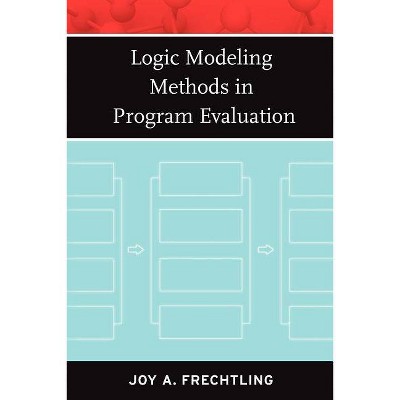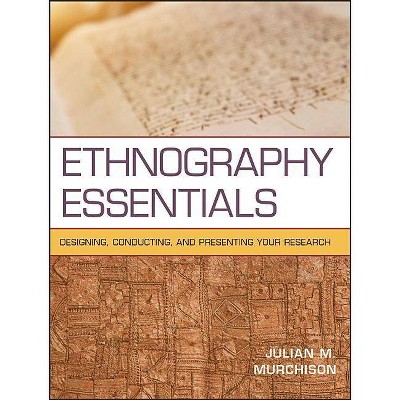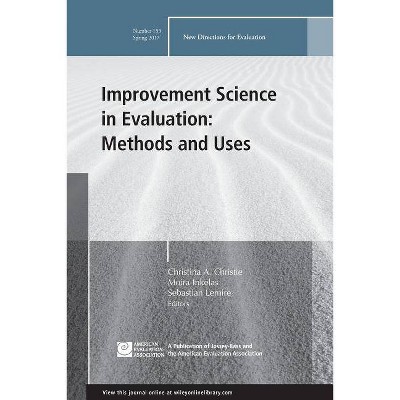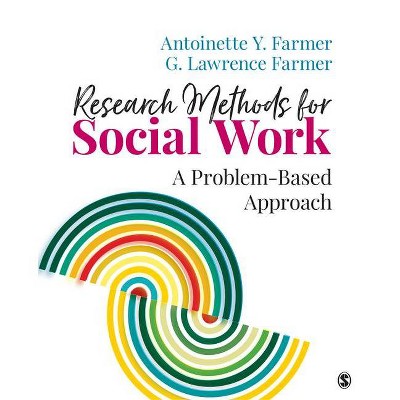Logic Modeling Methods in Program Evaluation - (Research Methods for the Social Sciences) by Joy A Frechtling (Paperback)

Similar Products
Products of same category from the store
AllProduct info
<p/><br></br><p><b> Book Synopsis </b></p></br></br>Written for students, researchers, consultants, professionals, and scholars, <i>Logic Modeling Methods in Program Evaluation</i> provides a step-by-step explanation of logic modeling and its importance in connecting theory with implementation and outcomes in program evaluation in the social sciences. <p> </p> <p><i>Logic Modeling Methods in Program Evaluation</i>'s comprehensive approach: </p> <p>- Shows how the logic model can be used to clarify assumptions, reach group consensus, and bridge between various disciplines;</p> <p>- Identifies the specific components of logic modeling and discusses inputs, activities, outputs, short and long-term outcomes, contextual factors, and optional components and variations;</p> <p>- Focuses on the critical role of consensus in the development of a logic model, including factors such as teaming, timing, and collaborative learning;</p> <p>- Explores issues such as the most common mistakes in the development and implementation of logic models and the use of logic models in projects with different levels of complexity or different durations;</p> <p>- Discusses how the logic model can be used to identify the range of outcomes to be examined and how summative questions can be prioritized;</p> <p>- Includes a variety of illustrative case studies of simple, multi-year, and complex projects and demonstrates the use of the logic model to establish project goals and evaluate the project's outcome.</p> <p> </p><p/><br></br><p><b> From the Back Cover </b></p></br></br>Written for students, researchers, consultants, professionals, and scholars, Logic Modeling Methods in Program Evaluation provides a step-by-step explanation of logic modeling and its importance in connecting theory with implementation and outcomes in program evaluation in the social sciences. <br /> <br /> <p>Logic Modeling Methods in Program Evaluation's comprehensive approach: </p> <ul> <li>Shows how the logic model can be used to clarify assumptions, reach group consensus, and bridge between various disciplines;</li> <li>Identifies the specific components of logic modeling and discusses inputs, activities, outputs, short and long-term outcomes, contextual factors, and optional components and variations;</li> <li>Focuses on the critical role of consensus in the development of a logic model, including factors such as teaming, timing, and collaborative learning;</li> <li>Explores issues such as the most common mistakes in the development and implementation of logic models and the use of logic models in projects with different levels of complexity or different durations;</li> <li>Discusses how the logic model can be used to identify the range of outcomes to be examined and how summative questions can be prioritized;</li> <li>Includes a variety of illustrative case studies of simple, multi-year, and complex projects and demonstrates the use of the logic model to establish project goals and evaluate the project's outcome.</li> </ul> <p>Logic Modeling Methods in Program Evaluation is an important resource for anyone who wants to have a better understanding of the application of the logic model.</p><p/><br></br><p><b> Review Quotes </b></p></br></br><br>The book is definitely worth buying. Both program developers and evaluators will find the text useful. (<i>Journal of Multidisciplinary Evaluation</i>, March 2008)<br><p/><br></br><p><b> About the Author </b></p></br></br>Joy A. Frechtling is a vice president and associate director in Westat's Education Studies Group. She has more than thirty years' experience in conducting educational evaluation, addressing all levels of the educational system.<br /> <br />
Price History
Price Archive shows prices from various stores, lets you see history and find the cheapest. There is no actual sale on the website. For all support, inquiry and suggestion messagescommunication@pricearchive.us




















